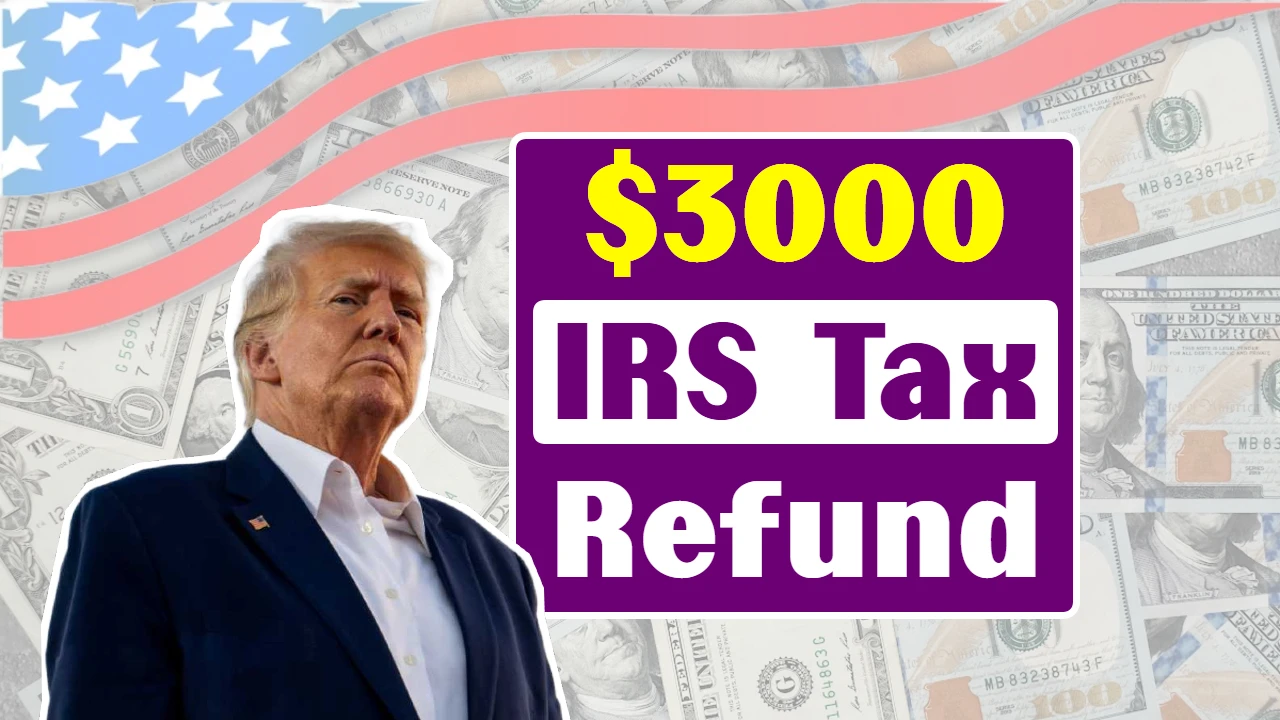That’s a large part of the financial world for millions of Americans. Each year, tension builds as taxpayers await the arrival of their federal income tax refunds from the Internal Revenue Service. Many of those who are eligible will also get a credit refund of up to $3000 come 2025, depending on what they earned and the tax credits and deductions they qualified for.
That’s money that could make a real financial impact on many millions of Americans. It helps them cover bills, rent, groceries, and other debts. The IRS has a sequence that it uses to release tax refunds. There are some factors that can make this date a bit complicated, like how and when you filed, and whether your return is complicated or has errors, but you can make a rough estimate to figure out roughly when your refund will arrive.
$3000 IRS Tax Refund 2025
IRS issues its own projected refund schedule each year, which provides the dates that tax filers can expect to receive their refund. Refunds typically start being released a few weeks after the opening of the tax season in late January. Early filers are usually the first to receive their refunds, assuming they submit their returns accurately.
For returns that are electronically filed with direct deposits, the refund normally arrives within 21 days. But paper returns, or mailed checks, can take much longer, or even weeks, or longer, especially given that the IRS and the Treasury Department are operating with limited capacity.
Taxpayers who expect a refund of around $3000 for 2025 could see it earlier, if everything goes smoothly with their returns. Returns claiming certain credits (EITC or ACTC) should only take a day or two longer than usual to hit your bank account, thanks to additional scrutiny. The IRS has this schedule in place to prevent false refund claims.
IRS Tax Refund Schedule Overview
| Department | Internal Revenue Service (IRS) |
| Article On | $3000 IRS Tax Refund 2025 |
| Country | USA |
| Eligibility | Must have filed the income tax return |
| Amount | $3000 |
| Payment Mode | Direct Deposits and Paper Checks |
| Payment Schedule | Monthly |
| Category | Government Aid |
| Official Website | https://irs.gov/ |
Factors That Determine When You Will Receive Your Refund
Several key factors dictate when the $3000 tax refund money comes through direct deposit or mail. One of the biggest is how the tax return was reported. It beats the speed and precision of snail-mailing a paper return. With direct deposit, it’s the fastest way to receive a refund.
Errors on the return, like incorrect Social Security numbers or inconsistent income information, can delay refunds while the agency walks through your return manually, checking the information. There is the timing of when the return is filed. Those who wait to file until the April deadline may have to wait longer for their return to be processed, as the IRS is inundated with returns at that time.
At the same time, the returns submitted early in the season are typically processed sooner. E-Filed returns flagged for review or needing verification of the identity, put those through at a slower pace, as the IRS needs to verify the claims are real.
Eligibility to receive the $3000 IRS Tax Refund
- File a federal tax return with the IRS.
- Income needs to qualify as taxable by the IRS.
- Driven by the total tax withheld and the eligible credits.
- You have a valid Social Security number and the appropriate filing status.
- Some credits, such as EITC and ACTC, may impact your total refund amount.
How the IRS Processes the $3000 Refund
There are steps the IRS takes after receiving a tax return before the refund is issued. That includes scrutinizing wage statements (W-2s), 1099 forms, and any tax credits you took. If there are no discrepancies and no fraud or errors are found, the return is determined to be valid for payment.
The refund will arrive either through a direct deposit or a paper check in the mail, depending on your preference when you filed, if you are entitled to any of the $3000 paid to families.
Direct deposits normally are made no less than 21 days after filing. The I.R.S. cycles payments in a batch, meaning that thousands of refunds are dispensed each week. Paper checks, meanwhile, may take several additional weeks to arrive in the mail.
Why the $3000 Refund Matters
For many Americans, a $3000 tax refund is no small windfall. It’s also a short-term lifeline to help pay for daily expenses and short-term goals. Some families may use their refunds to pay down bills, and others may save them for emergencies, or spend them on education or health care. In a moment when inflation is raising the cost of living, receiving such a payment could provide some relief from expenses, especially for low- and middle-income families.
The comeback also shows how good the taxpayer was at year-round financial planning. In cases when the withholding from paychecks was accurate, the refund could be lower. But for people who had too much withheld, the refund is generally larger. Even so, the $3000 refund represents a chance at financial stability or planning.
FAQs
When would the IRS have to start paying those refunds for the 2025 tax year?
Typically, it is started in late January every year with refunds.
How long does it take to get $3000 back?
They are normally sent out within 21 days if the return was submitted electronically.
Can a tax refund be delayed?
Indeed, it can be delayed due to errors, reviews, or filing on paper.
Is a paper check or a direct deposit faster?
Yes, the quickest way to get your refund is to have it directly deposited.
Can I track my refund status?
Yes, with the “Where’s My Refund?” tool on the IRS website.



